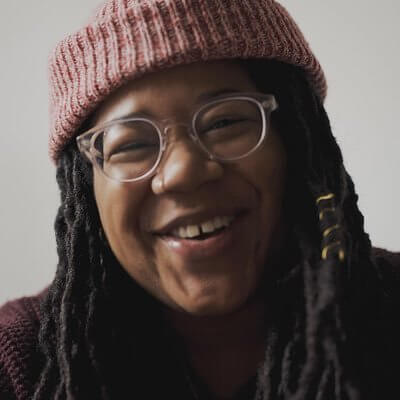Show Me The Money
BIPOC Media Still Waiting On Ad Spend
By Madhusmita Bora
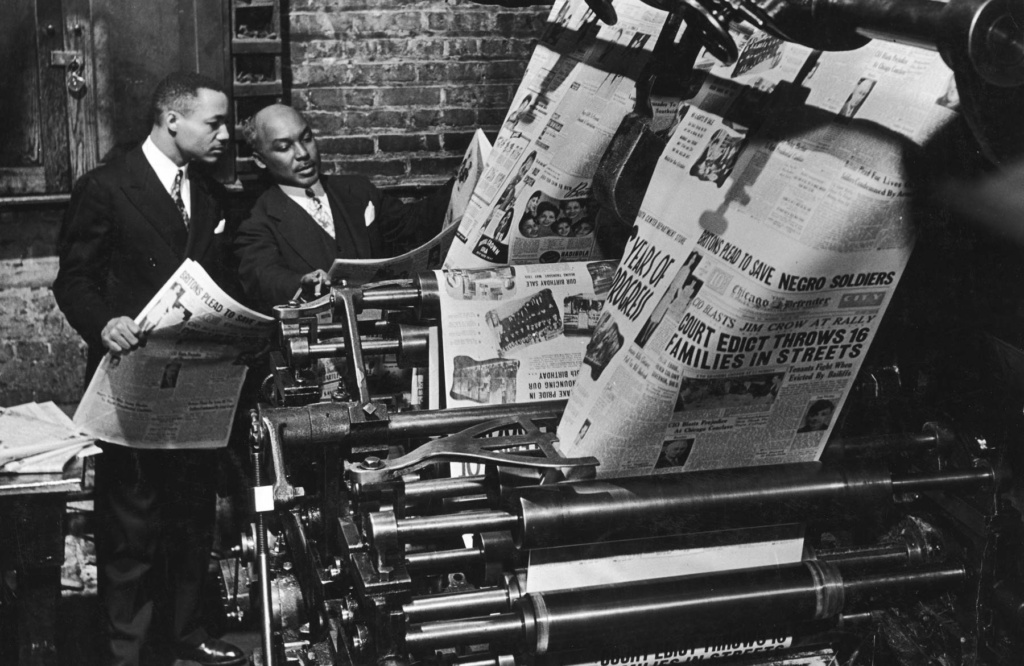
The Chicago Defender, founded in 1905, featured the writings of prominent Black Americans such as Langston Hughes, Ida B. Wells, and Gwendolyn Brooks. It was a key driver of the Great Migration which saw American Blacks flee the Jim Crow south for greater equality and economic opportunity.
Paulette Brown-Hinds was unconvinced from the very beginning.
The second-generation publisher of Black Voice News called the outpouring of corporate pledges to support Black- and Brown-owned media a “cyclical trend.”
There are others who feel the same way.
“The verdict is still out,” said Garry Pierre-Pierre, founder and publisher of The Haitian Times.
The killings of George Floyd, Breonna Taylor and Ahmaud Arbery and the heightened discourse on racism in 2020 on main street and Wall Street unleashed a flood of promises in support of Black- and Brown-owned media companies. There was renewed focus on diversity, equity and inclusion initiatives and many corporations and ad giants promised to do better by dedicating a comparatively higher percentage of their media spend on Black- and Brown-owned companies. This wasn’t the first time that racial justice, equity and corporate accountability came under the spotlight. It happened during the Civil Rights era and again in the 1990s. Just as nothing long-lasting and tangible emerged during these two periods, history seems destined to repeat itself.
With the #BlackLivesMatter protests slowly disappearing from the public consciousness and social media discourse, owners of Black- and Brown-media companies are wondering where corporations stand with those pledges. They are curious about the funding process, and are frustrated with the lack of transparency. It’s 2022 and Brown-Hinds said she has yet to see a significant bump in advertising dollars. There was census and Covid-related funding that came from the state; she hasn’t seen any notable support coming from major retailers.
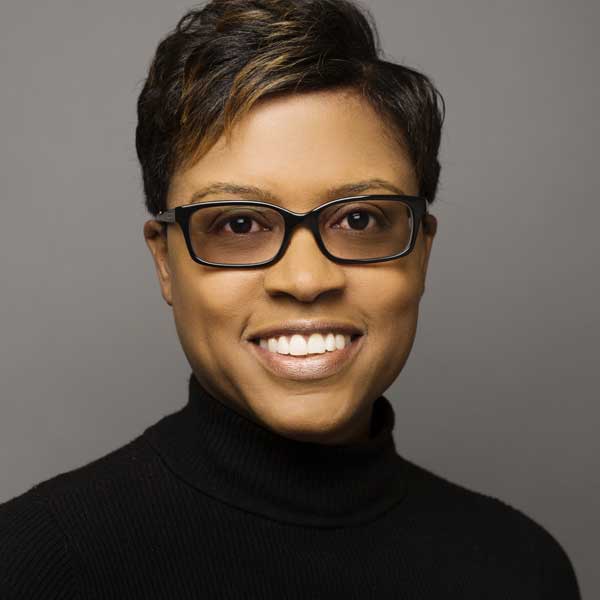
Has corporate America reverted to business as usual?
“There’s no mechanism in place to see what is happening and how they are doing it. We have a very short memory,” Pierre-Pierre said. “Corporate America doesn’t care. If they did, they would have a process in place.

Pierre-Pierre said smaller, BIPOC (Black, Indigenous, People of Color) media companies are navigating the daily challenges of producing outstanding journalism that serve their communities with limited resources. A member of the URL Media Network, a new organization made up of high performing Black and Brown-owned media outlets who share content, revenue and other resources, Pierre-Pierre and his counterparts see up close how difficult it is to secure these funds.
Many don’t have dedicated sales teams and administrative infrastructure to navigate the complex corporate and agency landscape to maximize ad sales opportunities. This is further complicated because many large corporations outsource their marketing and advertising to big ad agencies and rely on them to select the media organizations, distribute the money and manage the process all in the name of reaching diverse audiences.
However, most mainstream ad agencies have very little BIPOC representation on their staff, especially at the leadership level, and have historically ignored Black- and Brown-owned media organizations. Instead, many agencies are solely focused on reaching mass audiences, prioritizing quantity over quality. While big advertisers have pledged to spend record amounts of money with Black- and Brown-owned media, many BIPOC publishers continue to question whether the money is really trickling down and reaching the intended audiences if there are no checks and balances.
In March, after two years of existence, the Black News Channel shut down and filed for Chapter 11 bankruptcy, citing $10 million to $50 million in liabilities. Media mogul Byron Allen saved the channel from extinction. His company, Allen Media Group, announced in late July that it would acquire Black News Channel for $11 million.
“There’s no mechanism in place to see what is happening and how they are doing it. We have a very short memory.”
– Garry Pierre-Pierre
“One hundred percent of the Fortune 500 CEOs, their personal compensation is greater than what the Black News Channel took in last year in advertising dollars. Wow. So shameful, so horrific. So racist,” Allen said at a recent Black-Owned Media Upfront. Allen is the first Black American to own a 24-hour mainstream cable news network. The virtual Upfront event, organized by Allen Media Group, showcased Black-owned media companies and their programming and briefed attendees on progress that corporate America has made toward “advancing a real equity stake in advertising budget planning.”
Allen, who owns 36 stations in 21 markets and 12 other 24-hour HD networks including the Weather Channel, and free streaming networks such as TheGRIO-TV, said the greatest trade deficit in the United States is between white corporate America and Black America.
Corporate advertisers have historically perceived Black- and Brown-owned media as “ethnic, minority or niche” sources, investing their advertising and marketing dollars on what they consider mainstream outlets. Clouding things further is that historically there has not been a clear delineation between Black owned versus Black “targeted” media. Many of the Black-targeted companies, especially in the radio and cable industry, sprung up after the 1996 Telecommunications Act, which deregulated the cable industry and lifted the cap on radio station ownership. The law allowed media goliaths such as iHeartMedia to buy up multiple stations and dominate the marketplace by targeting Black audiences through programming, while pushing out smaller Black- and Brown-owned stations.
Similar efforts at consolidation by the bigger players across the media landscape have severely disadvantaged Black- and Brown-owned media companies, who are deeply entrenched in the community. Many have had to diversify their revenue models to include membership, philanthropic and government funding as a way to build long-term sustainability. As some of these companies transitioned to a digital only platform, the frustrations ran deeper because they now compete for ad dollars with Facebook and others.
U.S. digital ad spend was projected to soar past $200 billion last year with the tripoly of Google, Facebook and Amazon pocketing 64 percent of the money. A recent study on programmatic spends shows that publishers receive only 51 percent of what advertisers spend on average. Because of the lack of transparency and non-standardization in the system, 15 percent of what advertisers spend, representing roughly one-third of the advertising supply chain costs, could not be attributed.
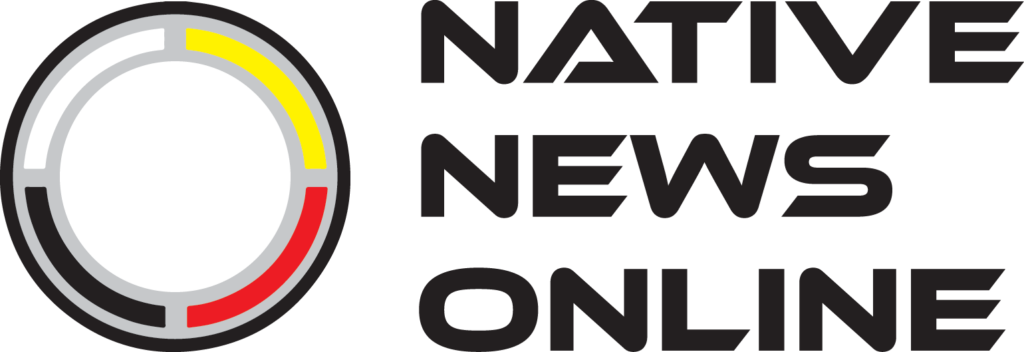
Founded in 2011, Native News Online reaches millions of Native and non-Native readers annually including American Indians, Alaska Natives, Native Hawaiians and others interested in Native American concerns.
“Oftentimes what happens is corporations appropriate money to the Fifth Avenue advertising agencies, who suck it all up and the money doesn’t trickle down to publishers,” said Levi Rickert, publisher and editor of Native News Online and Tribal Business News. “[The funds get] caught in this vicious loop and power still lies in ad agencies, which are predominantly white.”
Like Brown-Hinds, Rickert, who is building a health initiative for his community, has yet to see an uptick in ad revenues.
“I thought that could be an easy area to get sponsorship and support, especially after all the discussions on equity,” he said.
He reached out to corporations, including Procter & Gamble, for ad sponsorships. But, nothing came of it, he said.
“The greatest trade deficit in the United States is between white corporate America and Black America.”
– Byron Allen
The pledges
Group Black, a collective and accelerator for Black-owned media, recently announced it received a nine-figure commitment from Procter & Gamble. Last year, GroupM — the world’s biggest media investment company — announced that 20 of its clients pledged at least two percent of their total annual media budgets for Black-owned publications. That roster includes AARP; adidas; Citizens Bank; Danone; DoorDash; Ferrara; General Mills; L’Oréal USA; Mars; MGA Entertainment; Mizkan America Inc., (maker of RAGÚ, Nestlé, No7 Beauty Company Pernod Ricard); Pharmavite (maker of Nature Made vitamins and supplements); Ring; Target; Tyson Foods; Uber; and WW International, Inc. GroupM created the Media Inclusion Initiative (MII) to bring the lucrative promises to fruition.
“Directing investment toward Black-owned media is essential to the future of our industry and a priority for GroupM in our mission to create a more equitable ecosystem and make advertising work better for people,” Matt Sweeney, chief investment officer of GroupM U.S., said in a press release.
GroupM did not respond to emails seeking comment. Food manufacturing giant General Mills, one of the signatories on GroupM’s pledge endeavor, said the company continues to invest in Black-owned media properties nationally and locally.
“We are confident in our ability to deliver against our commitments of two percent plus of media spend in 2022,” said Kelsey Roemhildt, a spokeswoman for General Mills. “We are doing this through annual upfront commitments as well as remaining nimble with additional investment as needs and opportunities arise.”
A spokeswoman for Target said that the company continues to invest in Black-owned media locally and nationally, pledging five percent of its media budget with Black-owned media by the end of 2022. The company said it is in a multi-year partnership with Essence, a magazine targeting Black women. The retailer spent four times more with Black-owned media and doubled the number of Black-owned media company partners in 2021, compared to the previous year, according to Maurice Cooper, Target’s senior vice president of marketing.
Target also launched Bet on Black, a pitch competition series co-created with REVOLT, a broadcast and media company that focuses on millennials and Gen Z audiences and features Hip Hop culture, to highlight 12 Black-owned startup companies. The series was a multimillion dollar investment and, according to Target, its largest media spend to date. Target officials said in an email that the company doesn’t disclose exact dollar amounts spent on partnerships.
Industry experts are wary about the lack of transparency in these investments. There is no documentation or federal regulatory requirement that asks companies to detail where and how they are spending the funds they have committed. The only information available is what companies desire to share on their websites and social media.
Cheryl Thompson-Morton, Black Media Initiative Director at the Center for Community Media at CUNY, said the data on pledges is very hard to report because “by design so much of the information is hidden.”
“It seems like people are meeting those targets, but we have no proof,” she said. “The majority of the dollars seems to be going to larger national brands.”
A study published by the SSM Population Health Journal last fall found that although “there was a sharp decline in negative Black sentiment and increased public awareness of structural racism and desire for long-lasting social change, these shifts were transitory and returned to baseline after several weeks.” Researchers also found that negative attitudes toward Black people remain deeply entrenched. On May 14, an 18-year-old gunman with alleged white supremacist ideologies carried out a racist attack at a Buffalo, New York, grocery store in a predominantly Black neighborhood. The massacre left 13 dead, of which 11 victims were Black.
“For sure the issue went out of vogue for many corporations,” said Jade Ogunnaike, senior campaign director at Color of Change, an online racial justice organization. “Every Fortune 500 made commitments, but very few followed up on those commitments and refused a clear transparent process.”
Economies of scale
The outpouring of support has benefited larger companies. Corporations want to spend money on organizations with a bigger customer base and expansive reach. Most smaller Black publishers and media companies don’t have the resources to prove their outreach and market share. In the radio-television landscape, Nielsen’s panel system for audience measurement is the industry standard for determining audience insight, data and analytics across multiple platforms such as television, radio, podcast and digital streaming. Many Black and Brown organizations can’t afford its services and some of those that can have alleged data misrepresentation. This year, the company released Diversity Owned Media, a comprehensive look at audience reach, and promised to “break barriers to measurement, including pricing and policy revisions to increase visibility for diverse media owners.” Matt Hurst, a spokesman for Nielsen, said in an email that the company doesn’t share information on subscription fees.
This year, companies and networks owned by Byron Allen of Allen Media Group sued Nielsen claiming that its “outdated” and “unreliable” measurements cost smaller media companies “billions of dollars.”
The civil lawsuit, filed by CF Entertainment, Inc., Entertainment Studios Networks, Inc., Weather Group, LLC, and Weather Group Television, LLC, in Circuit Court of Cook County, Illinois, alleged that “based on Nielsen’s false representations, half-truths, and concealment, Nielsen received millions in fees per year to provide fundamentally unreliable and flawed services.”
Allen said that Black-owned cable companies are hit by a double whammy: lack of sponsorships and subscriber fees. He said the corporate pledges for building equity have been “window dressing,” and called on corporate America to be more intentional in their support of non-majority-owned media outlets.
In 2020, only two percent of U.S. advertising dollars was spent with Black-owned media, according to Nielsen Ad Intel.
“We have to stop the lying. The excuses, the shenanigans,” Allen said. “You have to lean in. You need to stop the racism.”
Black-owned radio and television stations make up two percent of the entire industry, said James Winston, president of the National Association of Black Owned Broadcasters (NABOB). When NABOB was founded in 1976, there were 37 Black-owned radio stations but not a single television station had Black ownership. Today, there are 202 radio stations and 50 television stations that are Black owned, Winston said.
“We had such a small number of stations that historically we never got a fair share of the advertising dollars,” he said. “NABOB was formed to improve the business climate, but in 2022 we still struggle with the same problem. There are too few stations and advertising agencies don’t value us.”
Sherman K. Kizart, managing director at Kizart Media Partners and a marketing veteran, said that the discrimination meted out to Black- and Brown-owned media by advertisers was such common practice that the industry referred to it as “No Urban and No Hispanic Dictates.” He estimates that the racist practice and policy cost Black and Hispanic broadcasters more than $300 million in revenue annually.
“There wasn’t any level of accountability.” Kizart said.
Kizart was instrumental in working with the Federal Communications Commission and the American Association of Advertising Agencies to draft the “Fair Play Charter” with an aim to end discriminatory buying. The Fair Play Charter went into effect in 2018.
Winston said the advertising world has always operated with the notion that they can reach Black listeners and viewers through Black-targeted channels and without investing their resources into Black-owned enterprises.
There has been an increase in advertising dollars, but only a handful of companies, such as ad giant Dentsu, Procter & Gamble and General Motors, have been intentional and persistent with their commitments, he said.
“What they don’t understand is Black-owned media does more than deliver programs. We are in [the] community and our community trusts us,” he said. “Our listeners engage with us at a much higher level. Otherwise we wouldn’t be as successful as we are.”
A rich history
Black-owned media has been a conduit of information and organizing for community members for 200 years.
A group of free Black men founded Freedom’s Journal in 1827 at a time when it was illegal for Black people to read or write, said Thompson-Morton of the Black Media Initiative. On its first publication, the editors wrote “We wish to plead our own cause. Too long have others spoken for us. Too long, has the publick been deceived by misrepresentations, in things which concern us dearly…”
During the Civil Rights Movement, Black-owned media delivered a counter narrative to the dominant white narrative, informed its constituents about actions and helped advance the cause, while highlighting issues facing the community and uplifting the humanity of Black people, Thompson-Morton said. That unique role of Black-led press that was started by Freedom’s Journal continues today.
A comparative content analysis of the Black press and U.S. mainstream media published by the Center for Community Media at the Craig Newmark Graduate School of Journalism at CUNY found that Black media excels more than mainstream media in covering issues important to Black communities, including racism, health disparities, and voting access and provides more historical context to present-day challenges.
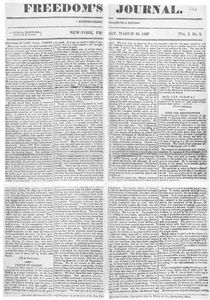
“We have to stop the lying. The excuses, the shenanigans.You have to lean in. You need to stop the racism.”
– Byron Allen
A long way to go
The promises made by corporate America in the last two years are minuscule compared to decades of discriminatory practices, and do not make up for the lost years, Winston of NABOB said.
“The amount of new advertising dollars we are able to obtain is still only a fraction of the amount of advertising dollars appropriate given our population and what Black consumers spend on corporate America,” he said.
Winston said it’s high time companies delivered on their promises of equity. If Blacks constitute 25 percent of consumers and mega corporations spend only one percent of their advertising dollars on Black-owned media, it’s a huge disservice to the community, he said.
“My hope is that this [the promises are] not a fad but a sustained commitment from corporate America to support Black-owned media,” Winston said.
Allen, owner of the Weather Channel, said that Blacks make up 14 percent of the U.S. population. Given those statistics, corporations should pledge at least five to ten percent of their budget to supporting Black-owned media.
“Not pledging is insulting. Not being transparent is insulting. It’s racist,” he said. “You are saying you don’t value us. You are saying I am going to give you just enough to make the Negro problem go away, so I can get back to my white privileged life. You need to pledge a percentage to Black-owned media. That needs to happen and it needs to happen now.”
Here is a short list of companies and their pledges of support for diversity-owned media
- Procter & Gamble committed a nine-figure advertising investment in Black-owned media.
- Target pledged to spend 5 percent of its annual media budget with Black-owned media beginning this year.
- General Mills, L’Oreal, Nestle, AARP, Mars, Pernod Ricard, Danone, DoorDash, Target and Tyson Foods are among 20 brands that have vowed to spend between 2 and 5 percent of their annual media budgets on Black-owned media outlets.
- IPG Media brands committed to spending a minimum of 5 percent on Black-owned media across all its clients by 2023.
- The Coca-Cola Co. said 8 percent of its total annual media budget will be allocated to Black, Hispanic and Asian American and Pacific Islander-owned media by 2024.
- General Motors said it would allocate 4 percent of its ad spend in Black-owned media by 2024, and double that to 8 percent in 2025.
- McDonald’s announced it would double its marketing dollars toward media companies, programmers and production companies owned by Black, AAPI, females and the LGBTQ community, by 2024. The company plans to increase its national ad spend to diverse owned media companies to 10 percent in 2024.
- Verizon hosted the first Black-Owned Media Summit last year by teaming up with Byron Allen and promised to increase spending in Black-owned media companies.
Madhusmita Bora (she/her) is a writer, teacher and an award-winning multidisciplinary artist. She has previously worked for The Philadelphia Inquirer, Indianapolis Star and St. Petersburg Times (now Tampa Bay Times).
This story is a collaboration between WURD Radio’s Lively-HOOD initiative and URL Media. It is part of a series called The Future of Work, which explores what work will look like as we move beyond the pandemic. It’s produced with funding from the William Penn Foundation and the Lenfest Institute for Journalism. WURD/Lively-HOOD is one of more than 20 news organizations producing Broke in Philly, a collaborative reporting project on solutions to poverty and the city’s push towards economic mobility.



